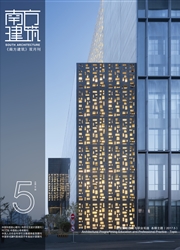

 中文摘要:
中文摘要:
住房问题已经成为中国城市所面临的主要问题。进入新世纪,保障性住房建设大规模展开.保障房社区作为一种独特的新社会空间,受到广泛关注。基于米歇尔·德塞都的日常生活实践理论,本文对广州金沙洲新社区展开实证研究,探讨当前中国城市保障房社区居民的日常生活机制。研究主要采用典型案例、实地观察、半结构式访谈、深度访谈相结合的综合研究方法。从“日常生活实践”的角度探讨地方政府、市场和保障房社区居民的“结构化”互动,梳理和解析居民日常行为规律。研究表明,保障房作为地方政府为推进劳动力再生产而实施的一种空间战略,目的在于解决“集体消费”下的城市问题。在此背景下,保障房社区居民面临着社会、经济和文化上的“边缘化”及“空间锁定”问题。作为应对,社区居民采取各种生活“战术”予以应对:生活回市区、巧妙改造、隐性就业、维护社交网络、积极生活等。本文以此为保障房研究提供新视角,并为相关政策的制定和实施提供参考和借鉴。
 英文摘要:
英文摘要:
Housing problem has become the main problem of China' s urban residents. After 2000, the scale of the construction of affordable housing has been unprecedented, and new affordable housing estates become social space, noted by geography, planning, sociology, and other disciplines. Based on the practice of everyday life from Michel de Certeau, this article takes Jinshazhou, an affordable housing community in Guangzhou as a case to explore the everyday life of residents in China. The study aims to examine the interaction between local government, market and residents from the perspective of the practice of everyday life, using field observations, semi-structured interviews and in-depth interviews. The results show that, the affordable housing is an 'urban strategy' implemented by the local government to promote low-cost labor reproduction. In this context, the new community residents' marginalized status on society, economy and culture has been 'locked' and 'marginalized' . As a response, residents take a variety of 'tactics' to retort through the practice of everyday life. These 'tactics' includes: back to city center, clever transformation, hidden employment, maintain the original social network, positive living. This paper provides a new perspective for affordable housing research and provide scientific reference for the formulation and implementation of related policies.
 同期刊论文项目
同期刊论文项目
 同项目期刊论文
同项目期刊论文
 The social networks of new-generation migrants in China';s urbanized villages: A case study of Guang
The social networks of new-generation migrants in China';s urbanized villages: A case study of Guang 期刊信息
期刊信息
